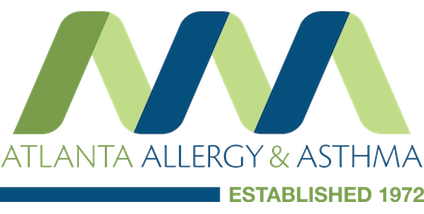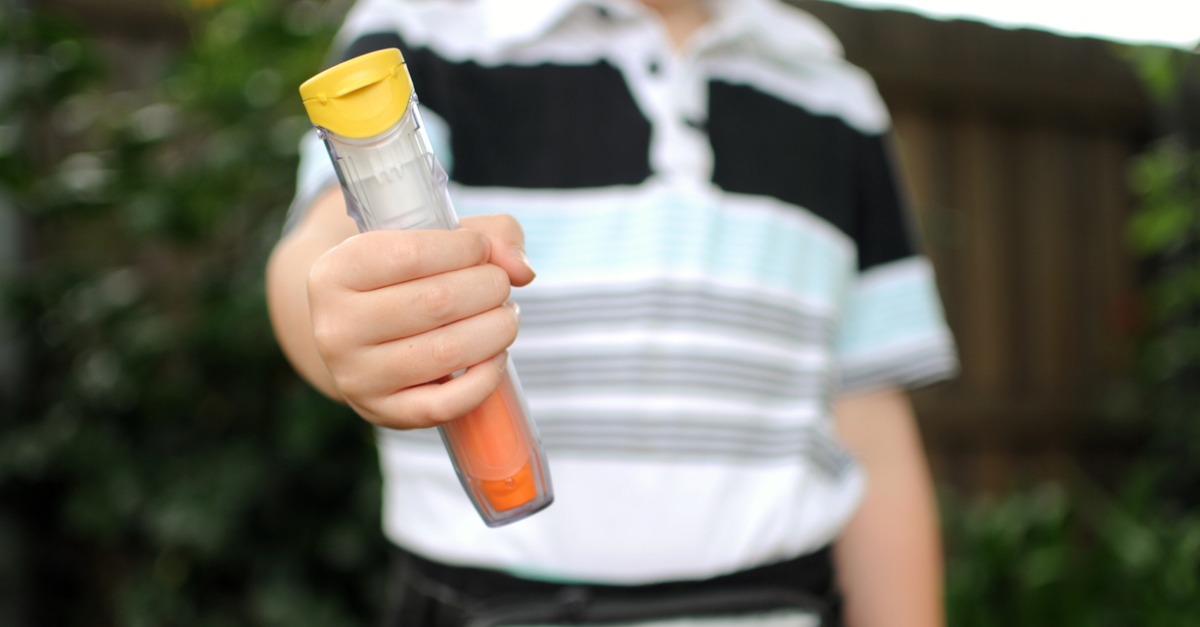Cost and access to EpiPens has been in the news for some time and we are still facing shortages today. We asked Atlanta Allergy & Asthma physician Dr. Lily Hwang to talk about who needs this drug and how to make sure you have access if it is medically necessary.
What Is an EpiPen and What Is It Used For?
EpiPen is the brand name of an auto-injectable device that delivers the drug epinephrine. It is a life-saving medication used when someone is experiencing a severe allergic reaction, known as anaphylaxis.
EpiPen is just one of the brand names of devices known generically as Epinephrine Auto-Injectors. Others include EpiPen Jr., Adrenaclick, Auvi-Q, Symjept, and several generic versions of injectable epinephrine.
Epinephrine acts on the whole body to block the progression of the allergic response. It constricts the blood vessels, leading to increased blood pressure, and decreased swelling. This allows the muscles around the airways to relax, causing the lungs to open. Epinephrine also prevents the release of more allergic chemicals, which stops the progression of the allergic response.
Epinephrine is the only medication that works on the entire body, multi-system, multi-organ, for anaphylaxis, which is why it is the only drug recommended.
The New “EpiPen Spray”
In August of 2024, neffy, the first epinephrine nasal spray, was approved by the U.S. Food and Drug Administration for patients 66 lbs and above. Neffy is the first needle-free option available for patients at-risk for severe allergic reactions to foods, drugs, or insect venom.
How Do You Know If You Need Injectable Epinephrine?
First and foremost, if you suspect you have had an allergic reaction to a food or insect sting, you should see a board-certified allergist to evaluate your reaction/symptoms. The allergist will obtain pertinent medical history, perform a physical exam, and recommend diagnostic testing if indicated.
If you already have a diagnosis of food allergy, it is important to see your allergist regularly for possible re-testing and an oral food challenge to determine if you have outgrown some of your allergic triggers. Epinephrine devices are indicated for patients at risk for anaphylaxis, so in some cases, a prescription may no longer be medically necessary.
Can You Give Us Some Examples of When Injectable Epinephrine Is Not Needed?
Emergency epinephrine is not indicated for a food intolerance or sensitivity. It is prescribed for patients with an IgE mediated food allergy. Allergy testing will confirm a true allergy.
Also, a child who is diagnosed with an allergy to egg or milk should have regular evaluations by an allergist. Most children will outgrow these allergies. Your allergist will determine the need for re-testing and recommend a skin test, blood test, and/or oral food challenge. An oral challenge is always done in a medical office where trained personnel are present to deal with any reactions.
Throughout our practice, every week we have children that can add egg, milk, and other foods back into their diet. If you are being properly managed by an allergy expert, you should not be filling prescriptions that are no longer medically indicated.
EpiPens and Insect Stings
For those treated for a stinging insect allergy, there may be an adjustment to their need for epinephrine. A true allergy to insect venom is diagnosed with a consultation and appropriate testing by an allergist. The good news for those with this diagnosis is that there are excellent treatment options that can desensitize the patient and protect them from serious reactions in the future. Insect venom immunotherapy is 98% effective, so once a patient is desensitized, they may no longer need to administer epi at the onset of the sting. However, it is commonly advised that the patient continues to carry their epinephrine with them in case they experience multiple stings (ie. from a nest), which may still result in anaphylaxis.
Find more information on insect sting allergy.
Once There Is a Confirmed Diagnosis That Includes the Risk of Anaphylaxis, Besides the Prescription for Injectable Epinephrine, What Else Does the Patient Need to Do?
Knowing when and how to use your injectable epinephrine is very important. Your allergist and their staff will help you put a plan in place so you can recognize the signs of anaphylaxis and feel comfortable acting in the event of an emergency. Most deaths from anaphylaxis are caused by a delay in the administration of epinephrine. We tell our patients: when in doubt, administer. Using epinephrine if not medically necessary will not hurt you — however — not using can have dire consequences.
It is important that you are trained in the proper technique for using your specific device. Studies show that those who did not administer said they were not sure when or how to use correctly. We encourage our patients to bring their epinephrine devices with them to office visits so that we can ensure proper use.
A patient that has a confirmed food allergy diagnosis should also have a Food Allergy Action Plan in place. This document serves as an excellent way of communicating your medical needs to schools, daycare, and camps, in the event others need to make life-saving decisions for you. And, as stated earlier, regular follow-up visits to determine your ongoing risk of anaphylaxis are essential.
If Cost or Availability Is an Obstacle to Getting Your Epinephrine Auto-Injector, What Are the Options?
We continue to experience shortages with some products, so it is important for patients to know that there are options in epinephrine devices including EpiPen, Auvi-Q, and several generic choices, and the newest option, the ‘epi nasal spray’, neffy. If you are switching devices, again, make sure you know the differences in the administration technique of each product. Speak with your allergist and make sure you are comfortable using your device of choice. There is a link with training videos, as well as Patient Assistance programs, at the end of this blog.
Anything Else You’d Like People to Know?
In addition to epinephrine, the biologic Xolair (omalizumab), has been approved to treat IgE mediated food allergy in certain adults and children for the reduction of allergic reactions, including the risk of anaphylaxis which may occur with an accidental exposure to one or more foods. Dr. Hwang recommends shared decision making between you and your allergist to determine if this novel, preventative therapy is the right choice for you or your child.
If you have any questions or concerns, speak with your allergist to discuss your options for epinephrine coverage. Having generic options have helped a lot of people who previously had cost concerns. Regardless of your choice of epinephrine device, work together with your board-certified allergist to devise an anaphylaxis plan that you prepared to follow in the event of an emergency.
Injectable Epinephrine Devices and Training
Intranasal Epinephrine Device and Training
Assistance Programs:
Viatris (manufacturer of EpiPen and the authorized generic) Kaleo (Auvi-Q), and others offer assistance programs to help patients gain access to epinephrine when cost is an issue. You also might consider writing a letter to your insurance company for a tier exception to help lower patient cost.
If you have any questions about injectable epinephrine, food allergy, insect sting allergy or other allergic conditions, schedule an appointment with one of our board certified allergists.

